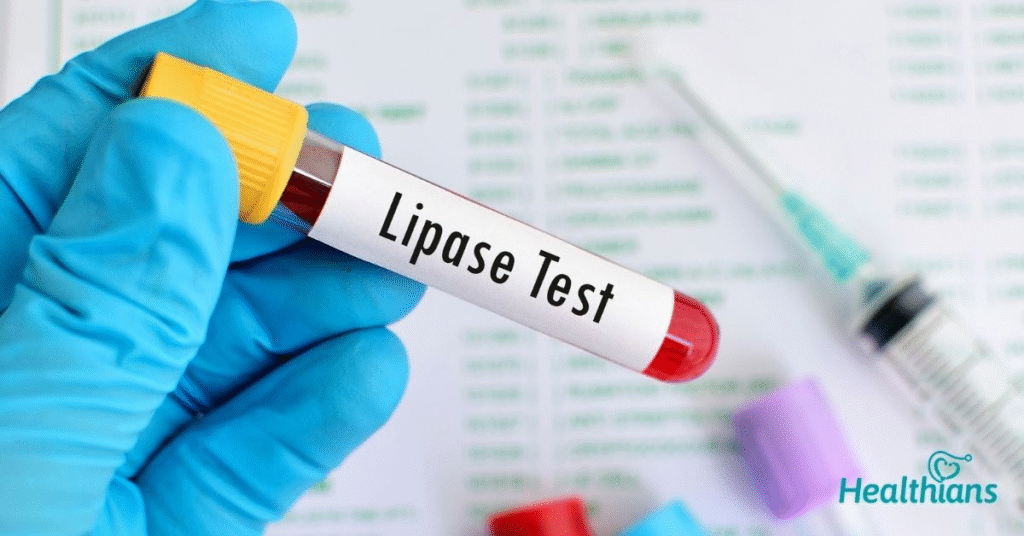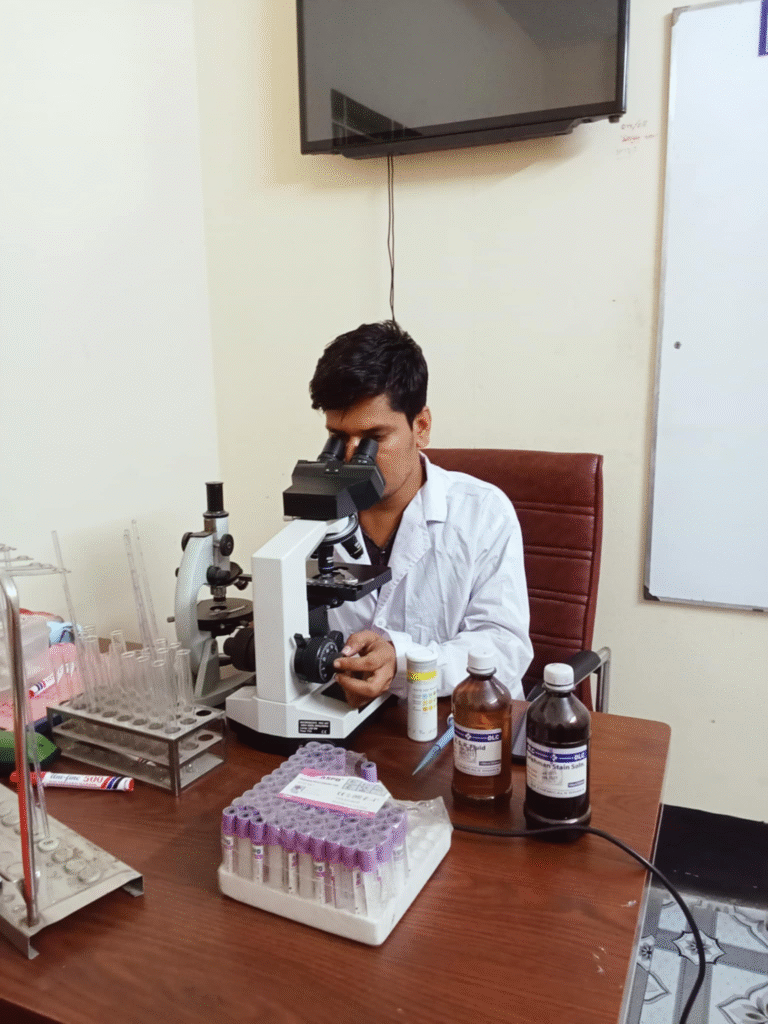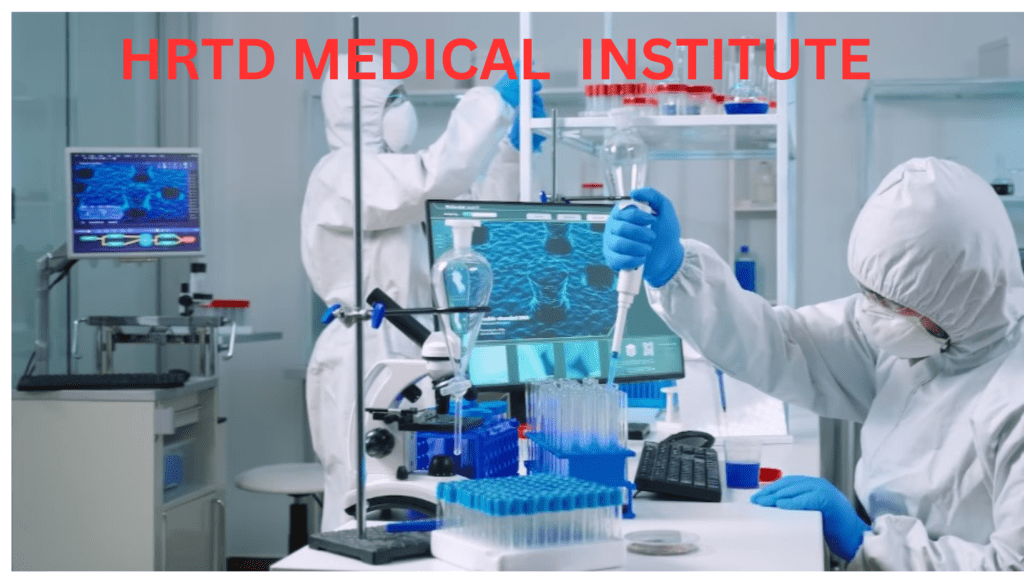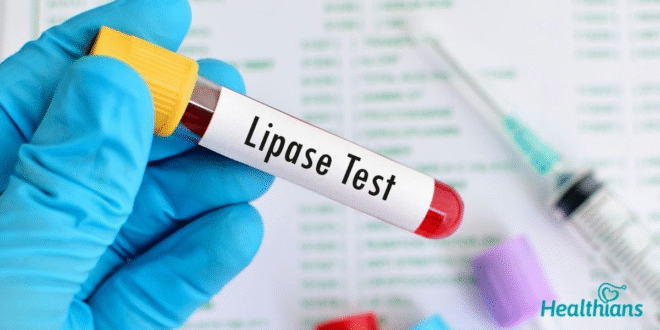Serum Lipase Test 01797522136

Introduction
Modern medicine relies heavily on diagnostic testing to uncover hidden diseases, guide treatments, and monitor patient recovery. Among the wide range of biochemical tests available, the Serum Lipase Test is one of the most valuable investigations for evaluating pancreatic function.
Lipase is a digestive enzyme that plays a crucial role in breaking down fats into smaller fatty acids and glycerol, enabling their absorption in the small intestine. The serum lipase test measures the concentration of this enzyme in the blood. Abnormal levels often indicate pancreatic diseases, such as acute pancreatitis, chronic pancreatitis, or pancreatic duct obstructions.
At HRTD Medical Institute, we prioritize the importance of precise laboratory testing to detect early signs of disease. The serum lipase test is routinely performed in our biochemistry laboratory and interpreted by expert pathologists, ensuring accurate results for proper diagnosis.
This comprehensive article explores the clinical significance, methodology, interpretation, and applications of the serum lipase test, along with how HRTD Medical Institute ensures high-quality testing and patient care.
Chapter 1: Understanding Lipase
What is Lipase?
Lipase is an essential enzyme that hydrolyzes dietary triglycerides into free fatty acids and monoglycerides. It is produced by:
- Pancreas (Pancreatic lipase) – The most clinically significant form, secreted into the small intestine.
- Stomach (Gastric lipase) – Breaks down short-chain triglycerides.
- Liver and adipose tissue – Secrete lipoprotein lipase for fat metabolism.
Functions of Lipase
- Aids in fat digestion and absorption.
- Helps regulate lipid metabolism.
- Provides energy through fatty acid breakdown.
Because pancreatic lipase is the major form circulating in the blood, its levels are directly linked to pancreatic health.
Chapter 2: What is the Serum Lipase Test?
The serum lipase test is a biochemical investigation that measures the amount of lipase enzyme present in a patient’s blood. It is widely used to diagnose acute pancreatitis, where enzyme leakage occurs due to inflammation or injury of the pancreas.
Why Doctors Order the Test
Doctors at HRTD Medical Institute recommend this test when patients present with:
- Severe abdominal pain (often radiating to the back)
- Nausea and vomiting
- Loss of appetite
- Abdominal swelling and tenderness
- Unexplained fever with gastrointestinal symptoms
The test is often ordered alongside serum amylase test, abdominal ultrasound, or CT scan for a complete diagnostic picture.

Chapter 3: Clinical Significance of Serum Lipase Levels
Elevated Serum Lipase (Hyperlipasemia)
High levels of lipase are clinically significant and may indicate:
- Acute pancreatitis – Lipase increases 3–10 times the normal range within hours of onset and stays elevated longer than amylase.
- Chronic pancreatitis – Moderate but sustained elevations.
- Pancreatic duct obstruction due to gallstones.
- Pancreatic cancer.
- Peptic ulcer with perforation.
- Intestinal obstruction or ischemia.
- Cholecystitis (gallbladder inflammation).
- Renal failure, since impaired clearance increases serum lipase.
Low Serum Lipase
Less commonly, decreased levels may occur in:
- Permanent pancreatic damage (advanced chronic pancreatitis).
- Cystic fibrosis (due to enzyme deficiency).
- Certain genetic enzyme disorders.
Chapter 4: The Test Procedure
Sample Collection
- A small blood sample is drawn from a vein in the patient’s arm.
- The process is simple, safe, and quick.
Method of Analysis
At HRTD Medical Institute, serum lipase testing is performed on automated biochemistry analyzers using enzymatic methods. The test works by measuring lipase activity on triglyceride substrates and quantifying the byproducts.
Reference Range
Normal lipase values vary by laboratory, but typically:
- Adults: 0 – 160 U/L
- Children: Slightly lower ranges
Our institute follows internationally accepted reference standards for accurate reporting.

Chapter 5: Preparation Before the Test
To ensure accuracy, patients are advised:
- Fasting for 8–12 hours before the test may be required.
- Avoiding alcohol, as it affects pancreatic enzymes.
- Informing doctors about medications, since drugs like opioids, diuretics, and birth control pills can alter results.
At HRTD Medical Institute, our healthcare team provides patients with detailed pre-test guidance.
Chapter 6: Serum Lipase vs. Serum Amylase
Although both tests are used in pancreatic evaluation, lipase is considered more specific and sensitive than amylase.
- Amylase rises quickly but normalizes within 2–3 days.
- Lipase rises later but remains elevated for up to 7–10 days.
- Lipase is more pancreas-specific, while amylase may increase in other conditions like salivary gland inflammation.
That’s why at HRTD Medical Institute, physicians often order both tests together for better diagnostic clarity.
Chapter 7: Conditions Diagnosed by Serum Lipase Test
The test helps in diagnosing and monitoring:
- Acute Pancreatitis – The primary indication.
- Chronic Pancreatitis – Evaluating severity and recurrence.
- Gallbladder and Biliary Diseases – Gallstones, cholecystitis.
- Pancreatic Cancer – Helps in suspicion and monitoring.
- Peptic Ulcer Perforation – Elevated due to leakage of enzymes.
- Bowel Obstruction or Infarction.
- Renal Impairment – Reduced clearance raises enzyme levels.
Chapter 8: Interpretation of Results
Doctors interpret test reports alongside patient history, symptoms, and other investigations.
For example:
- Lipase 3x higher than normal = Strongly suggests acute pancreatitis.
- Mild elevation = Could indicate gallbladder disease, renal dysfunction, or intestinal obstruction.
- Normal lipase but strong symptoms = Could mean late pancreatitis with exhausted pancreatic function.
At HRTD Medical Institute, experienced physicians and pathologists ensure accurate interpretation.
Chapter 9: Limitations of the Test
Although highly valuable, serum lipase testing has limitations:
- Elevated lipase is not always due to pancreatitis.
- Some patients with pancreatitis may show normal lipase levels.
- Requires correlation with imaging (CT scan, ultrasound) and clinical evaluation.
Therefore, lipase is a key indicator but not a standalone diagnostic tool.
Chapter 10: Advances in Lipase Testing
Modern laboratories, including HRTD Medical Institute, use advanced techniques for improved accuracy:
- Automated analyzers for rapid results.
- Isoenzyme differentiation for research purposes.
- Integration with electronic medical reporting for quicker delivery.
Such innovations enhance diagnostic reliability and patient outcomes.
Chapter 11: Patient Experience at HRTD Medical Institute
Patients choosing HRTD Medical Institute benefit from:
- Fast and painless sample collection.
- Quick turnaround times for reports.
- Affordable diagnostic services.
- Highly trained laboratory technologists.
- Consultation support from expert doctors.
Our priority is to provide accurate results with compassion and care.
Chapter 12: Preventive Measures for Pancreatic Health
Since the serum lipase test is most often used in pancreatic disorders, preventive strategies are important:
- Avoid heavy alcohol use.
- Maintain a balanced diet low in fats.
- Stay hydrated.
- Control cholesterol and triglycerides.
- Seek medical help for persistent abdominal pain.
At HRTD Medical Institute, we conduct awareness programs to educate patients about digestive and pancreatic health.
Chapter 13: Case Studies
Case 1: Acute Pancreatitis
A 40-year-old woman came to HRTD Medical Institute with severe abdominal pain and vomiting. Her serum lipase level was 950 U/L (normal < 160 U/L). Ultrasound confirmed gallstone-induced acute pancreatitis. Immediate treatment saved her life.
Case 2: Chronic Pancreatitis
A 55-year-old man with a history of alcohol consumption had recurrent abdominal discomfort. His lipase was mildly elevated. Imaging showed chronic pancreatitis with partial pancreatic damage.
These real-life cases highlight the importance of timely serum lipase testing.
Chapter 14: Role of HRTD Medical Institute
HRTD Medical Institute, Mirpur, Dhaka, stands as a trusted center for reliable diagnostic testing. Our contributions include:
- Modern biochemistry laboratory with advanced analyzers.
- Strict quality control ensuring accuracy.
- Affordable healthcare services for the community.
- Patient-centered care guided by expert doctors.
We are committed to improving diagnostic excellence and patient well-being through dedicated medical services.
Chapter 15: Conclusion
The Serum Lipase Test is one of the most essential investigations for detecting pancreatic and digestive system disorders. Its high specificity for the pancreas makes it invaluable in diagnosing acute and chronic pancreatitis, gallbladder diseases, and other abdominal conditions.
At HRTD Medical Institute, we perform this test with advanced equipment, strict quality control, and expert interpretation, ensuring patients receive timely and reliable reports. Our goal is to provide accessible, accurate, and compassionate healthcare services for the people of Dhaka and beyond.
Anyone suffering from unexplained abdominal pain or digestive issues should consult a physician and, if advised, undergo a serum lipase test at HRTD Medical Institute for accurate diagnosis and proper treatment.
 Pathology Training Institute in Bangladesh Best Pathology Training Institute in Bangladesh
Pathology Training Institute in Bangladesh Best Pathology Training Institute in Bangladesh




